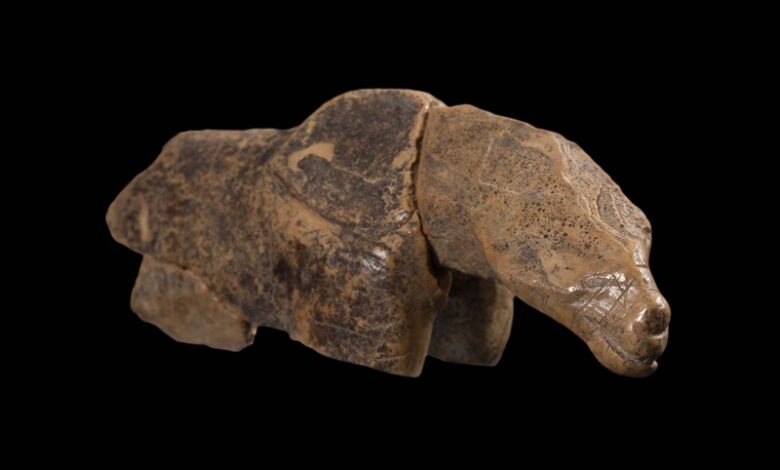Ancient Ivory Figurine’s Identity Puzzle: Horse or Bear?

In an archaeological twist, a prehistoric ivory figurine’s true identity has come to light after over two decades of study. Unveiled in Germany, the miniature carving had long been mistaken for a horse, only for recent discoveries to challenge this assumption. The figurine’s head was initially unearthed in 1999 within Germany’s Hohle Fels cave, a significant repository of ice age artifacts, dating back 35,000 years. As researchers diligently pieced together the 1-inch tall figurine, the prevailing belief was that it depicted a horse. However, a new fragment found in 2022 has raised questions about its true representation, prompting debates among scientists.
Over the years, scientists managed to assemble various parts of the intricate carving, each contributing to the notion of a horse representation. Yet, the discovery of a crucial fifth fragment in 2022 reshaped the narrative. Scholars from the University of Tübingen, as detailed in their press release, are now engaged in deliberations over whether the figurine is meant to portray a cave lion or a cave bear.
Professor Nicholas Conard from the University, a prominent figure in the research, highlighted two prevailing theories: the figurine could represent either a cave lion or a cave bear. The choice between these two possibilities hinges on the interpretation of certain distinguishing features found in the recovered fragments.
Conard, leaning towards the hypothesis of a cave bear depiction, emphasized that the figurine’s distinct “bear hump” corresponds to the height of the animal’s shoulders, mimicking the characteristic gait of a bear. However, colleagues within the field have also pointed out characteristics reminiscent of a Eurasian cave lion, a species prevalent in Europe during the ice age.
The ambiguity of deciphering Ice Age depictions, especially when preserved in fragments, was acknowledged by Conard in the press release. He emphasized the importance of further investigation to potentially uncover missing components that could offer more insight into the figurine’s true identity.As the debate continues, the figurines, now on display at the Prehistoric Museum in Blaubeuren, Germany, serve as a captivating artifact bridging the gap between ancient history and modern interpretation. This discovery underscores the challenges faced by archaeologists when confronted with fragmentary evidence from the distant past. It highlights the need for meticulous examination, collaborative discussions, and an openness to reevaluate initial assumptions.
In the evolving landscape of archaeological inquiry, the quest for knowledge drives scientists to revisit and refine their conclusions, ensuring that the narratives of the past are as accurate and comprehensive as possible.
News Mania Desk / Agnibeena Ghosh 16th August 2023






